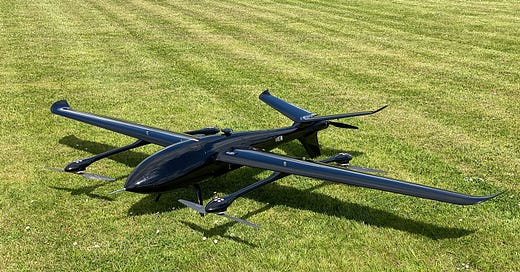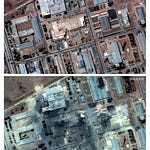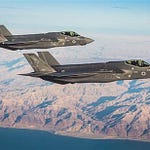Since November 18, 2024, residents across New Jersey have reported encounters with aerial vehicles that appear to transcend known technological capabilities. These sightings have created a compelling mystery: aircraft demonstrating characteristics that seem to defy our understanding of current engineering limits.
NewsNation investigative journalist Rich McHugh’s observation with the Ocean County Sheriff’s department revealed these craft remain invisible to thermal imaging. New Jersey Assemblyman Paul Kanitra added another layer of mystery, reporting that federal radar and electro-optical infrared cameras, typically capable of detecting drones from miles away, failed to register these craft. This comprehensive sensor invisibility, juxtaposed against visual confirmation by multiple credible witnesses, suggests capabilities beyond known technology.
Reported NJ Drone Characteristics
Witness accounts describe several extraordinary features:
Size variations from 6 feet to “SUV-sized”
No detectable heat signature
Extended flight times (6-7 hours)
Silent operation
Coordinated movement of up to 50 units
Electronic warfare effects on nearby devices
Ability to “go dark” when pursued
Current Drone Technology Baseline
To understand the apparent technological leap these characteristics represent, consider three of the most advanced VTOL platforms currently available:
Azure Hybrid VTOL
This 6.5-foot-long (2,020 mm) by 12.3-foot-wide (3,755 mm) platform achieves remarkable endurance - 12 hours with a 3-kg payload - through innovative hybrid propulsion. The aircraft employs a 110cc-170cc gasoline engine combined with electric motors, enabling both VTOL and fixed-wing operations. It is designed for large-scale aerial mapping and surveying operations, with a maximum payload capacity of 17 kg and cruising speed of 26 m/s. While its gas-electric hybrid system provides exceptional flight time, it generates significant heat during operation. The platform features advanced flight control systems but lacks swarm capabilities or electronic warfare features. Its carbon-fiber construction and blended wing-body design optimize aerodynamic efficiency and structural integrity.
SkyLane VTOL
This 6.5-foot-long (1,980 mm) by 11.5-foot-wide (3,500 mm) platform delivers 5 hours of endurance with no payload, or 2.5 hours carrying a 7-kg payload. Available in both electric and hybrid configurations, it features state-of-the-art AIRLink flight control systems with AI mission computing capabilities. The platform is designed for BVLOS operations, specializing in inspection, surveillance, mapping, and cargo delivery missions. Its hybrid version utilizes a petrol-powered pusher engine for extended range, while the all-electric variant offers quieter operation. The aircraft incorporates advanced swarm capabilities through 5G and satellite connectivity, enabling coordinated multi-drone operations. Operating at altitudes up to 3,000 meters with a cruising speed of 28 m/s, it demonstrates robust performance in various weather conditions.
Transwing VTOL
This 6.4-foot-long by 13.1-foot-wingspan (4.2 feet folded), up to 34-foot (10.36 m unfolded) platform features an innovative dihedrally-folding wing system that transforms between vertical and horizontal flight configurations. The all-electric aircraft carries a 15-pound payload for up to one hour, achieving cruise speeds of 60-65 knots with burst capabilities to 100 knots. Its unique design achieves superior lift-to-drag ratios above 20 through a sophisticated wing-folding mechanism that doesn’t require tilting propulsion systems. The platform employs four electric motors with folding propellers, allowing two motors to shut down during cruise flight for improved efficiency. The system has proven effective in maritime operations with the U.S. Navy, particularly in mission-critical cargo delivery scenarios. The Transwing has limited swarm capabilities in two-to-three drone formations operated by one pilot during naval exercises.
Theoretical Requirements: Engineering the Impossible
To achieve the reported capabilities, a platform would need unprecedented advances in multiple fields:
Propulsion System
Silent operation
No heat signature
Extended flight time
Hovering capability
High thrust-to-weight ratio
Power Source
6-7 hour minimum operation
Zero heat signature
High energy density
Rapid power delivery
Stealth Systems
Radar invisibility
No infrared signature
Silent operation
Visual camouflage capability
Electronic Warfare Suite
Disable consumer drones
Affect vehicle electronics
Avoid detection
Coordinated multi-unit operation
The simultaneous presence of these capabilities appears to violate multiple laws of physics and engineering limitations.
The Simple Solution Revolution
However, history teaches us to be cautious about assuming technological impossibilities. Time and again, clever engineering and basic physics have achieved what appeared to require revolutionary breakthroughs:
During World War II, British scientists discovered that simple strips of aluminum foil - known as “chaff” or “Window” - could render sophisticated German radar systems useless. This basic countermeasure proved more effective than complex electronic warfare systems.
In 1999, the Serbian military achieved what seemed impossible: they detected and shot down a stealth Lockheed F-117 Nighthawk aircraft. This is an aircraft that had 1300 bombing runs during Desert Storm with zero losses. Their method? Modified microwave ovens repurposed to detect the aircraft’s electronic emissions. A solution so simple it seemed implausible until it worked.
Recent footage from Ukraine demonstrates soldiers defeating modern thermal imaging systems with nothing more sophisticated than an umbrella incorporating thermal-blocking materials. This basic solution achieves what typically requires millions in stealth technology development.
Victorian stage performers created convincing “ghost” apparitions using carefully positioned mirrors and prisms, fooling thousands of observers and even scientists, demonstrating how basic physics can create seemingly impossible effects.
Reexamining the Impossible
These historical precedents suggest we should look for simpler explanations of the NJ drone phenomenon. Consider how basic solutions might explain each “impossible” characteristic:
Thermal Masking
Reflective materials covering heat-generating components
Directional heat venting (away from likely observation points)
Strategic component placement to distribute heat signature
Operating altitude beyond effective thermal imaging range
Silent Operation
Electric motors (inherently quiet)
Strategic altitude selection
Wind direction exploitation
Background noise masking
Extended Presence
Multiple units operating in shifts
Coordinated handoffs between platforms
Strategic use of wind patterns
Multiple launch/recovery sites
Size Variations
Multiple platforms of different sizes
Night vision limitations affecting perception
Lack of reference points in dark skies
Strategic altitude changes
Electronic Effects
Basic RF interference from multiple transmitters
Operation near existing infrastructure
Simple jamming techniques
Exploitation of consumer device vulnerabilities
The Integration Hypothesis
Rather than requiring revolutionary technology, the NJ drone phenomenon might represent clever integration of:
Existing drone platforms
Basic thermal masking
Strategic operational patterns
Simple electronic interference techniques
Exploitation of human perception limitations
Occam’s Razor
When faced with competing explanations, the simplest solution requiring the fewest assumptions is usually correct. Consider our two scenarios:
Scenario 1: Revolutionary Technology
Requires multiple technological breakthroughs
Violates known physics principles
Demands unprecedented power systems
Necessitates revolutionary materials science
Implies classified technology far beyond current capabilities
Scenario 2: Clever Engineering
Uses existing technology
Employs known physics principles
Relies on documented countermeasures
Follows historical patterns
Matches official “no threat” assessment
Remaining Questions
While simple solutions explain many reported characteristics, some aspects warrant further investigation:
Coordination of multiple units
Launch/recovery logistics
Operation purpose
Economic feasibility
Conclusion
The New Jersey drone phenomenon offers an important lesson in problem-solving and technological assessment. While initial reports suggested technology beyond our current capabilities, closer examination reveals how clever application of basic principles could achieve these seemingly impossible effects.
The FBI and Department of Homeland Security’s joint statement indicating “no evidence the drones pose a threat to national security” adds another non-sensical layer of complexity to an already puzzling situation. Are we witnessing plausible denial, managed democracy, strategic ambiguity, perception management, as so many times in the past? As nightly sightings continue, this mass confusion forces us to confront an uncomfortable reality: either our understanding of current aerospace capabilities requires significant revision, or we’re observing something far more conventional through a lens of misperception. Both possibilities warrant rigorous investigation.
This pattern of official response echoes the 1947 Roswell incident, where the government first announced the recovery of a “flying disc,” then quickly revised it to a weather balloon, and decades later revealed it was actually a classified Project Mogul surveillance platform. The initial confusion and seemingly contradictory statements served a strategic purpose - protecting sensitive technical capabilities while managing public perception. Similarly, today’s “no threat” assessments and inability to detect these craft might serve multiple institutional objectives beyond their literal meaning.
As White House National Security Communications Adviser John Kirby noted, sophisticated detection technologies have failed to corroborate these sightings. Perhaps they’re looking for something too complex, when the answer lies in simple solutions cleverly applied.
The gap between reported capabilities and known technology might be filled not by revolutionary breakthroughs, but by innovative combinations of existing technology and basic physics - a pattern repeated throughout history. Sometimes the most elegant solutions are also the simplest.












Share this post